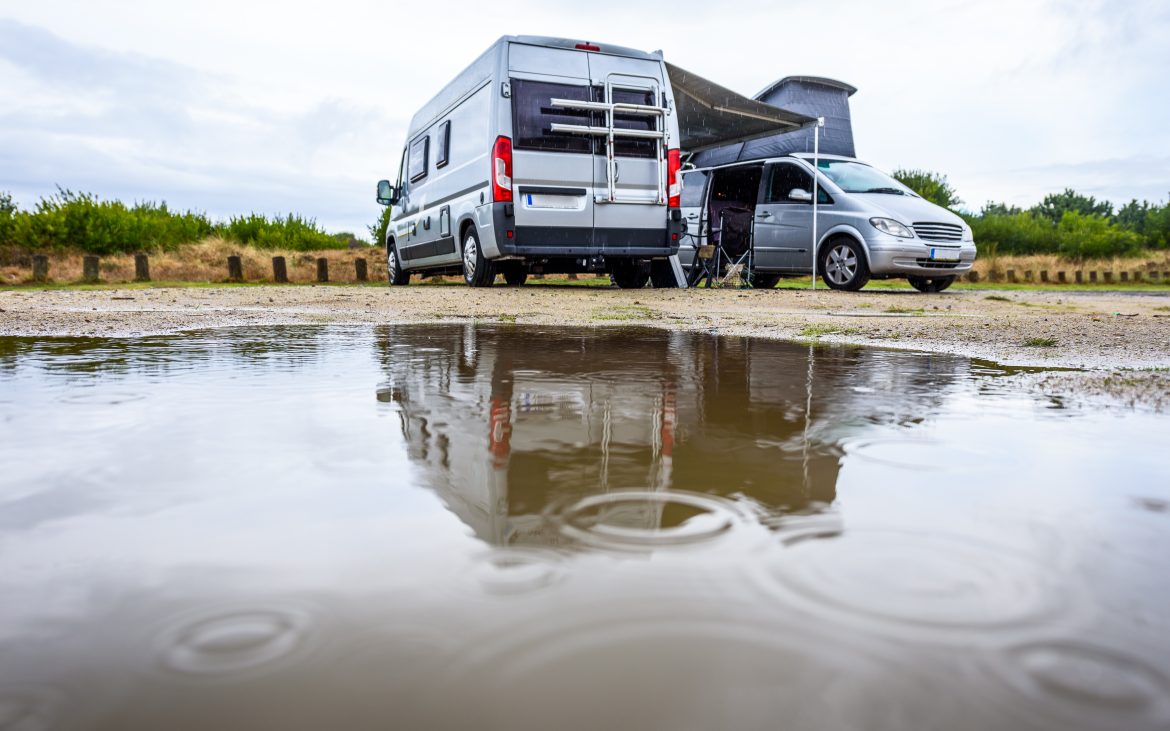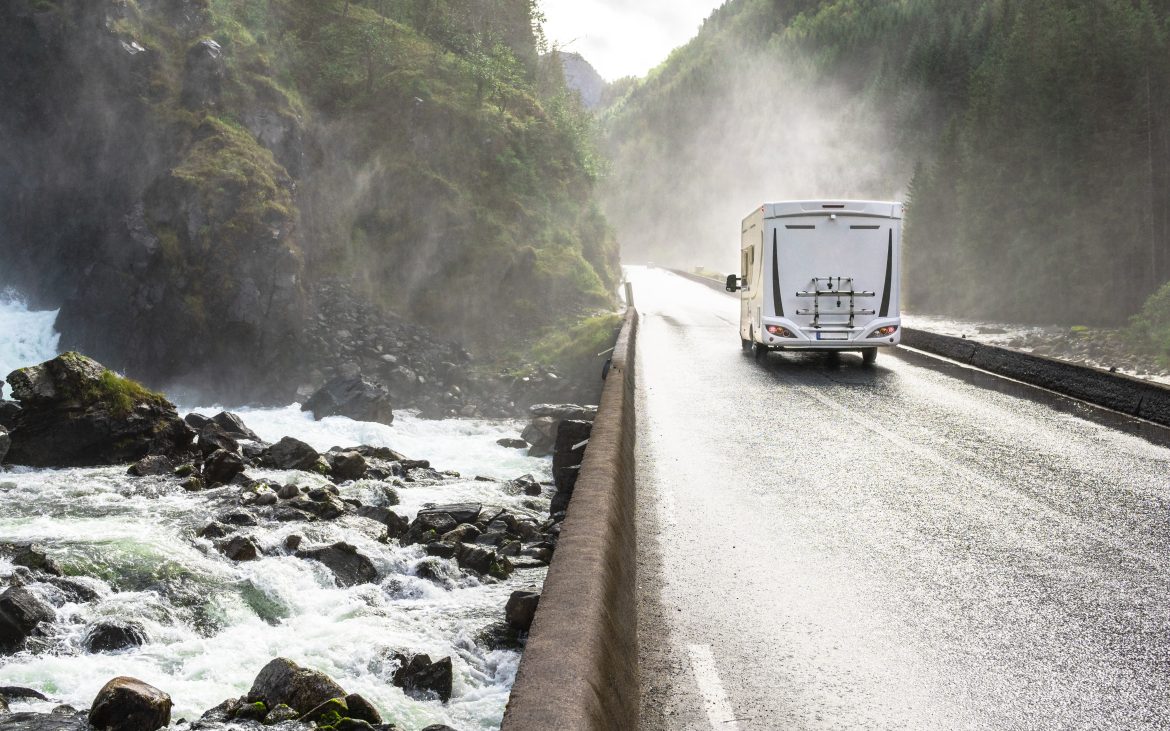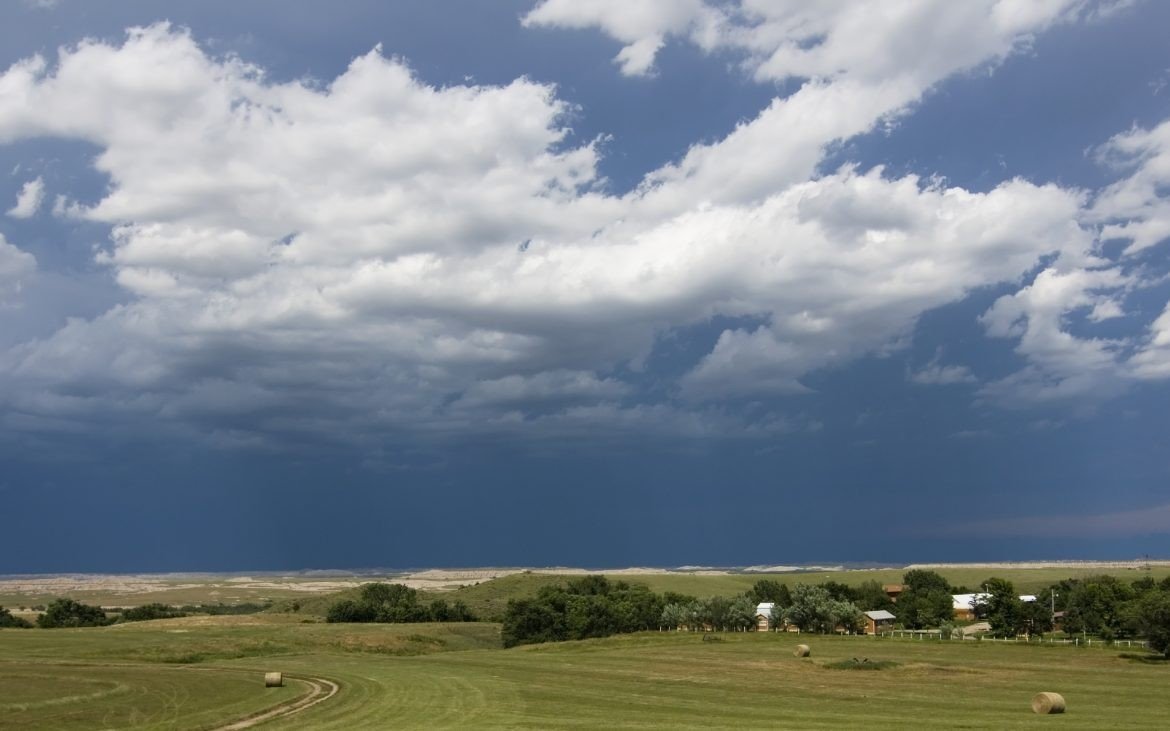WEnRV travel news, products, and industry trends
Your RV Emergency Weather Plan
There’s nothing like exploring the back roads independently in your RV. Because of this you oftentimes find yourself at a new destination every day. The risk is that weather changes too, sometimes in an instant, and not all RVers pay attention to weather conditions when traveling or spending the night. RV’s are great, but they are not safe in severe weather, like lightning and thunderstorms with high winds, tornadoes and hurricanes.
This Spring season, awareness is key. Consider a few of these tips to help keep your rig safe as you’re traveling through various and changing weather conditions.

Shutterstock
When you travel hundreds of miles a day in your RV, weather conditions can change several times. When you stop for the night — boondocking, staying in a parking lot or campground — all you want to do is get set up quickly and get some rest. The weather is the last thing on your mind. The problem with this is severe weather can occur without much warning, and if you are caught in it, it can be disastrous.
So what’s the plan? Plan is the key word here. RVers need to have an emergency weather plan in case of a severe storm. To start with, the more you know about the weather around you the more you can react.
Weather Apps
Have you ever heard of the National Oceanic Atmospheric Administration (NOAA) Weather Radio App? The NOAA Weather Radio is a nationwide network of radio stations that broadcast continuous weather information directly from a nearby National Weather Service Office, and you can now access it from your smartphone.
They broadcast National Weather Service warnings, watches, forecasts, and other hazard information 24 hours a day. Alerts inform people if they need to take some type of action in order to protect themselves, such as “seeking shelter” or “to evacuate an area immediately”
What does this mean to RVers? It means for only $4.99 you can monitor potentially severe conditions wherever you are with up-to-date and accurate information. The app includes radar maps and you can listen to over 200+ NOAA Weather Radio All Hazards Broadcasts to get the latest Warnings, Watches, Advisories, Forecasts, and other hazards 24 hours a day from the National Weather Service. Learn more here.

Shutterstock
Every RVer should have some way to monitor weather warnings in real-time.
Another helpful tool is the Drive Weather app, which functions similarly to the Weather Radio app in that it provides travelers with updates about weather conditions in their area. Drive Weather offers a free basic version that includes the features below, but for an ad-free option with additional features, you’ll have to pay for the Pro version. The free features include:
• Weather – Rain, Snow, Fog, Freezing Rain, Tornados, Thunderstorms, Hail, Smoke, & Haze
• Temperatures
• Animated Radar
• Cloud Cover Forecast
• Time Tweaker for Truckers and RVers
• Up to 2 days of the weather forecast.
• Limited Trip Length
• Area Weather for general weather
• Exceptionally cool animated waiting screens
How to Prepare

Shutterstock
I am including a short checklist you can use to help prepare for emergency weather planning when you are traveling in your RV. You can add to, or take away from this list to tailor it to your specific needs.
The first step to our emergency weather plan is to get a weather radio app if you don’t already have one, and to always monitor it when you use your RV. The next step is to develop an emergency evacuation plan, to use in the event of severe weather. When you arrive at a campground, ask at the check-in desk about an emergency plan in case of a severe storm such as a tornado, a thunderstorm with high winds, or flash flooding. If they don’t have a plan you need to make your own. Locate a structure that is safer than your RV, like a bathhouse or the campground office. Always stay on the lowest level possible and away from doors and windows. Brief everybody with you on the emergency plan. Explain to children how to respond to different disasters and the dangers of severe weather, fires, and other emergencies. Instruct children on emergency exits and instruct them on how and when to call 911. Make sure everybody in your party is aware of the situation in the case of severe weather. Monitor the weather radio for emergency information. Emergency weather watches and warnings are for counties and towns, so always check a map for the county or town where you are staying. Have an emergency supply kit made up and easily accessible. The kit should contain flashlights, batteries, rain ponchos, bug spray, a portable weather radio, a first aid kit, non-perishable packaged or canned food, a manual can opener, blankets, prescription and non-prescription drugs, pet supplies, bottled water and any special items for infants, elderly or disabled family members.To learn more about how to prepare for and react to different types of severe weather take a moment to visit http://www.nws.noaa.gov/.
Remember, RV’s are not safe in severe weather. This includes severe thunderstorms with high winds, tornadoes, and hurricanes. Always be prepared for bad weather by staying informed. So learn about the different types of weather hazards, download an app or two to try out if you haven’t already, and create a plan with your family and practice and maintain the plan.
The post Your RV Emergency Weather Plan appeared first on Good Sam Camping Blog.

Copyright
© Good Sam Camping Blog


